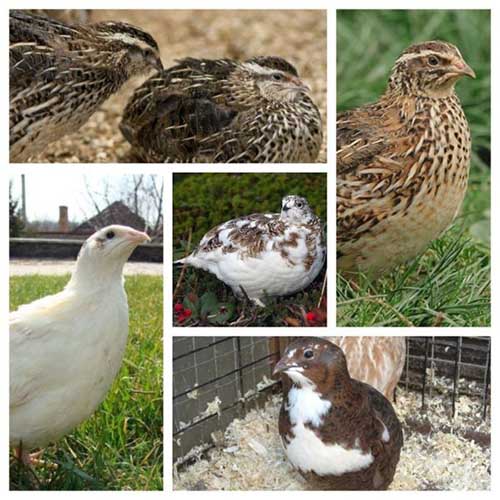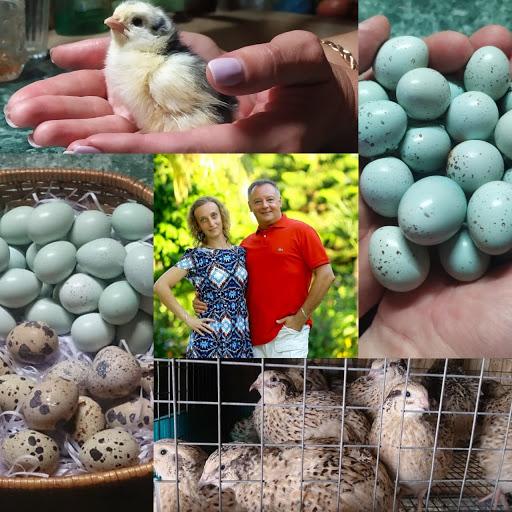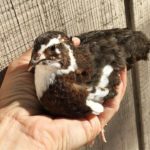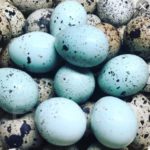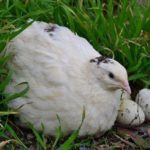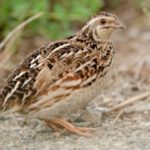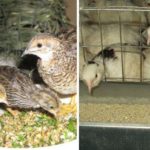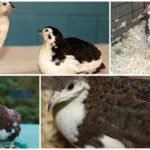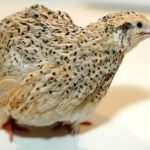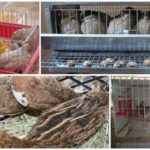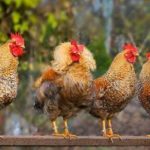When raising egg breeds, the main attention is paid to the productivity and quality of eggs. Celadon are rare quails that are distinguished by their unpretentiousness, high productivity, large eggs with high nutritional value and a unique blue eggshell color. Quail product can be consumed raw, it contains a lot of protein and nutrients, low calorie content, and excellent taste.
History of appearance
Celadon (aka celadon) is not a breed, but rather a line obtained as a result of long and complex selection from 6 breeds.Therefore, quails have a variety of colors. The progenitor of the breed is the common quail (Coturnix species). Unique quails were bred in the USA. Breeders from South Louisiana worked on the breed. The work was painstaking, and the result was the appearance of high-class birds.
Description and characteristics of quail celadon (celadon)
Celadon is an egg breed that remains rare. Quails are small and do not differ in size from their wild ancestors, but are characterized by high egg production. A description of the breed is given in the table.
| Carcass weight | 80-125 g |
| body length | 16-20 cm |
| annual egg production | 300 pieces |
| average daily productivity | 1 egg |
| maximum monthly productivity | 25 pieces |
| egg weight | 8-12 g |
| color | varied – light, light brown, dark brown, tuxedo, silver |
| beginning of oviposition | at 40 days of age |
Thanks to the early onset of egg laying, breeding the Celadon breed is cost-effective. Females that will lay eggs should be placed in separate cages already at 25 days of age. To provide a family with quail eggs, a livestock of 5-8 individuals is enough.
Young quails aged from 4 to 8 months are characterized by maximum egg production. At the very beginning of the productive period, the monthly indicator is 8-12 eggs. From 8 months of age, productivity begins to decline, by 10 months it is 8-15 pieces.
Main pros and cons
Features of blue eggs breed
Celadon quails are carriers of a unique recessive gene that colors the shells of eggs blue. The color varies slightly; it can be light blue, grayish blue, deep blue, with a greenish tint. The surface of the shell may be uniform in color, but is more often covered with brown specks.
Blue eggs can be consumed raw; the pathogen of salmonellosis is not transmitted to humans through them.
Low-calorie, protein-rich celadon quail eggs contain useful substances, thanks to which the product, when consumed regularly,:
- strengthens the immune system;
- stimulates metabolism;
- fills the body with energy;
- improves the functioning of the visual organs;
- weakens inflammatory reactions;
- normalizes blood pressure;
- helps the body weakened by diseases to recover;
- extinguishes the allergic reaction.
Maintenance, care and feeding
Celadon quails can be kept both in cages and in free space. To prevent quail from getting sick and remain productive, it is important to create optimal conditions in the poultry house:
- temperature – from +18 to +22 °C;
- air humidity – about 70%;
- absence of drafts;
- sufficient space – 20 cm2 per individual;
- Daylight hours are 16 hours.
The cages are installed with plain or galvanized metal rods, the width between which should be such that a bird's head can fit through. The height of the cage should be at least 20 cm, since quails are jumping.
Drinkers and feeders are attached to the outside of the cage; quails feed by sticking their heads through the bars. The cage is equipped with trays for disposal of droppings and collection of eggs.
The poultry house is equipped with sources of additional lighting. Avoid heat, which causes birds to go bald. Celadon quails die when the temperature drops below +8 °C. It is better to place chicks in a heated brooder.
Egg production is determined by the quality of the diet. In order for celadon quail to lay eggs well, the following feeding rules must be observed:
- Feed with complete feed for broiler chickens PK-5-2. There are no feeds developed specifically for quail.
- Do not give compound feed to ordinary chickens, it reduces egg production. For the same reason, do not feed shit and other low-calorie foods.
- Feed 3 times a day without overfeeding. The optimal daily portion per individual is 25-30 g.
- Dispense food strictly according to schedule. Do not allow food to stagnate in the feeders.
- Do not change your diet suddenly. This will cause long-term stress to the birds.
- When preparing compound feed yourself, use crushed corn and wheat grains, bone and fish meal, skim milk powder, and soybean meal.
- For better digestion of food, include sand and chalk in your diet.
How the breed is bred
3-4 females sit next to the male. Celadon quails do not have a developed maternal instinct, so offspring are obtained using an incubator. The eggs are kept in the incubator for 17-18 days, turned 3-6 times a day. The temperature should be 38.5 °C for the first 10 days, then 38 °C for a week, and on the last day it is reduced to 37.5 °C. Hatching is fast and friendly, lasting a maximum of 10 hours.
For hatchery breeding to be successful, eggs must be selected according to the following criteria:
- correct form;
- smooth shell without bumps or dents;
- normal weight for the breed;
- one yolk inside when translucent, located closer to the blunt side;
- the absence of two yolks, as well as dark inclusions inside;
- absence of cracks, even minor ones, on the shell.
The temperature in the first days of life of the chicks is maintained at +35 °C, and by the age of one month it is gradually increased to +25 °C. For the first half a month, celadon chicks are exposed to 24-hour lighting. In the first days, the chicks are fed with boiled crumbled yolk, then transferred to compound feed for broiler chickens.
What do birds get sick with?
The pathologies that quail suffer from can be divided into several categories:
- caused by unsuitable conditions (drafts, high humidity);
- provoked by poor nutrition (hypovitaminosis, deficiency of minerals and proteins);
- parasitic;
- infectious (bacterial, viral, fungal);
- poisoning.
Celadon quails stop laying eggs when:
- poor quality feeding;
- insufficient lighting;
- drafts;
- unfavorable temperature conditions;
- high or low air humidity;
- the appearance of a new male;
- during the molting period.
Quails are shy. They stop laying eggs under regular stress associated with noise or the presence of large animals nearby.
When raised in closed poultry houses, celadon quail are less susceptible to infectious diseases than other poultry. If the conditions and hygiene of keeping are not observed, the livestock may be affected by salmonellosis (the disease occurs latently), colibacillosis, cholera, pseudoplague, helminthiasis, aspergillosis, and pullorosis.Poor nutrition leads to rickets, inflammation of the goiter, and blockage of the oviduct.




